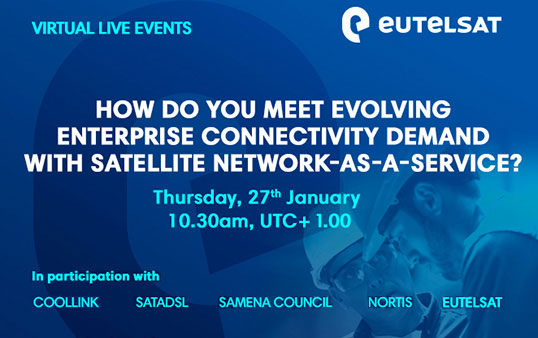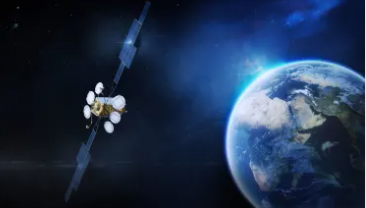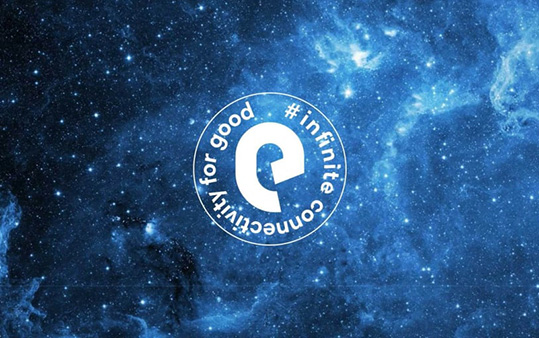5 Takeaways from Eutelsat’s Webinar "How 4K Technology is Reshaping Content Creation and Consumption"
As a cutting-edge visual technology, 4K and UHD accessibility continue to grow and offer an unparalleled viewing experience for today’s audiences. However, the technology adoption for broadcasters has been slow, with many adopting an attitude of careful reluctance. For many, 4K and UHD have yet to demonstrate tangible business benefits over HD viewing, despite the numerous advances it offers for viewers.
Eutelsat recently hosted a digital discussion around 4K with key stakeholders and leaders in the industry. Hosted by Andrea Michelozzi, of Communicare Digitale, and Eutelsat's Cristiano Benzi, the panel discussed trends, viewership numbers, and strategies for broadcasters to bolster their influence in the region. Both Andrea and Cristiano were joined by Nela Pavlouskova (Museum TV and MyZen TV), Benjamin Schwarz (Ultra HD Forum), Luca de Bartolo (TIVU SRL), and Paul Gray (Omdia).
If you want to watch the webinar, you can do so here. This blog will summarise five key takeaways offered in the discussion, serving as a small taste of what viewers can expect in the full webinar.
4K offers distinct benefits when showcasing documentary content
“When we experimented with 4K, we found that it was able to demonstrate the contrast and colours we needed to make an impact on audiences. Art, nature, architecture and beauty were all enhanced with 4K that couldn’t be accomplished with any other medium.” - Nela Pavlouskova, Managing Director of Museum TV and MyZen TV
During the panel discussion, trailers for Museum TV and MyZen TV were showcased in full 4K definition. As Nela Pavlouskova explained, they chose 4K specifically to highlight the intricacies and details of art and nature, which other technologies could not fully capture.
Paul Gray, the Research Director of OMDIA, also noted that 4K and UHD enhance viewing to such a point that outdoor content looks like viewers are seeing through the screen rather than looking at it.
In this way, 4K provides unique benefits for documentary content that shows complex physical and real subjects, which take full advantage of the clarity and pixel count that 4K offers.
UHD accessibility will reach over 50% coverage in Western Europe by 2024
“We’re currently sitting at around 40% of households having UHD capable TVs right now. In fact, it’s getting harder and harder to buy 1080p TVs wherever you go.” - Paul Gray, Research Director of OMDIA
4K and UHD enabled households are growing throughout the world. Soon the majority of households will be able to view in UHD or 4K. This presents a ready market for broadcasters who want to stream high-quality content that will only grow as the years go by. The rise of 4K viewing coincides with the decline of HD and SD resolutions, whose presence is slowly decreasing throughout Western Europe.
The reasons why top-performing broadcasters are choosing 4K
“4K is an evolution and a transformation. It’s an evolution of technology, but it’s also a transformation because 4K provides additional creative toolsets to creators. They are able to offer content previously unseen or impossible before.” - Cristiano Benzi, Eutelsat Senior Vice President of Professional Video
There are many advantages to using 4K production. It’s a way to target and achieve the best possible quality, secure, and future-proof your content and delight users. The panel pointed out that, much like HD phased out SD, 4K will phase out HD. When this happens, content that will not be able to adapt to 4K resolution will seem old and dated to viewers, falling out of favour and ultimately becoming obsolete. Using 4K early will help your content look fresher for longer and provide long-term value to broadcasters than if they were to stick to short-term gains with HD.
4K offers a revolutionised experience for sports viewers
“Old SD sports footage only used close-ups. It took the introduction of HD to open up the field and show the entire game. 4K will be the next step, truly giving a sense of presence for each viewer - like they’re actually there, participating.” - Benjamin Schwarz, Communication Working Group Chair, Ultra HD Forum
With 4K content production, it’s possible to fully leverage wide-angled shots that enable a sense of presence and immersion for viewers that is not possible with HD. This is critical for content focused on live events and sports since the real value of these broadcasts is to give a sense of presence and experience. The value of 4K is that it completely immerses viewers and enables moments of escapism that content producers can leverage.
4K is becoming a standard for advertisers
“In 2018, 4K was a risky prospect. Now, in 2022 it’s becoming a standard. When operators and advertisers can choose between 4K and HD, they increasingly choose 4K and downscale for HD viewers. There is a sentiment of ‘why choose HD when you have 4K?’” - Nela Pavlouskova, Managing Director of Museum TV and MyZen TV
4K content provides a differentiator not just for viewers, but also for operators and advertisers. With more broadcasters slowly adopting 4K, other stakeholders are automatically choosing content that is of a higher quality. Over time, this is becoming more standardised and is expected to make pitching HD content a hard sell for operators and advertisers.
More insights are available in the webinar
If these insights were interesting to you and you would like to find out more on 4K broadcasting or how it will develop for content creators, be sure to watch the webinar here - completely free of charge.
Eutelsat offers some of the most effective ways to broadcast 4K to a wide range of audiences. To discover how Eutelsat and satellite connectivity can help you transform the way your viewers experience and access your content, visit our website.




